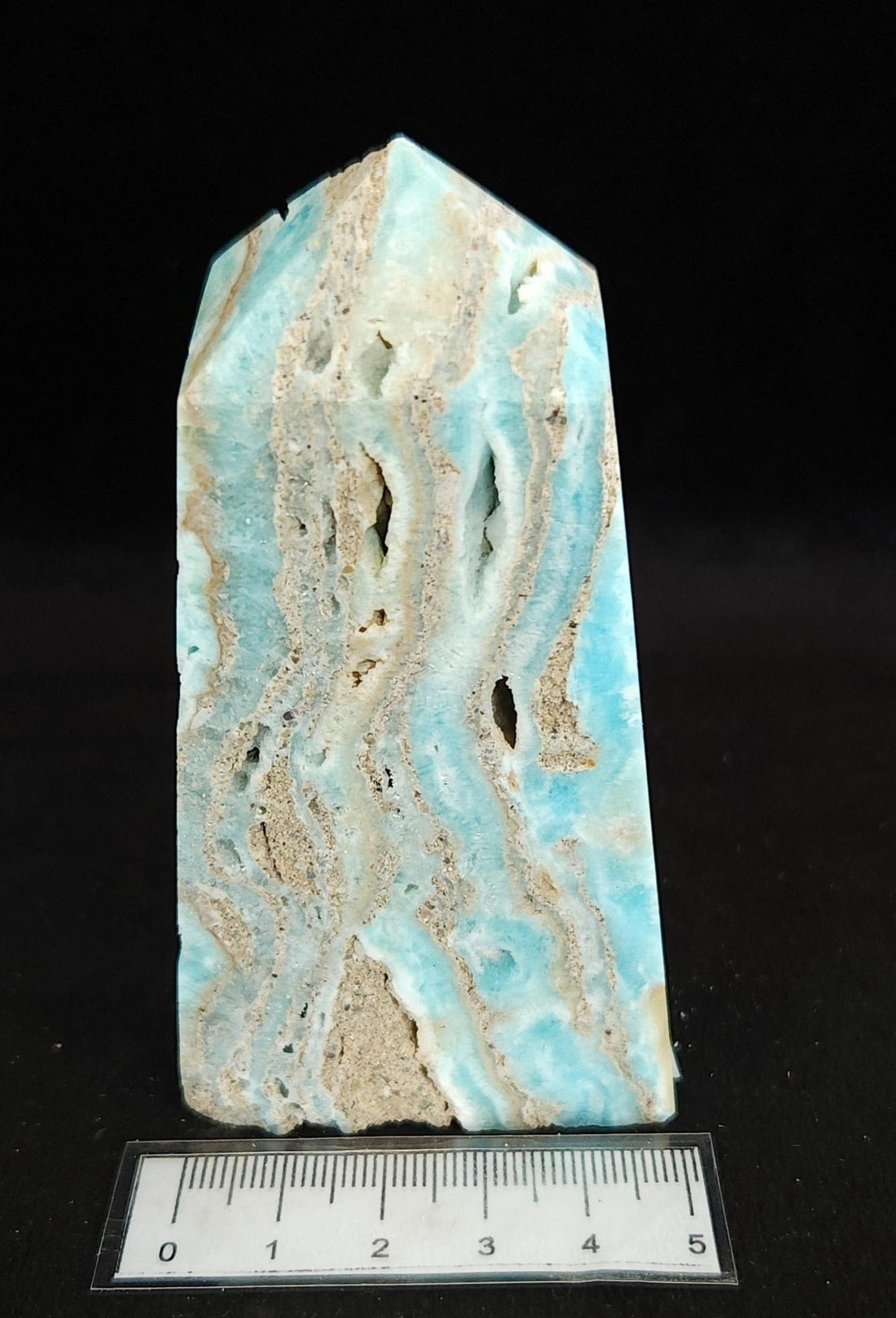Blue aragonite, known for its striking blue to blue-green colour and unique crystal habits, has captivated mineralogists, geologists, gemologists, and gem enthusiasts alike.
Geological Formation and Occurrence
Blue aragonite is a calcium carbonate mineral with the chemical formula CaCO₃. It primarily forms as a secondary mineral in the oxidising zones of carbonate rock deposits. It is often found associated with other minerals such as calcite (CaCO₃) and dolomite (CaMg(CO₃)₂).
The formation process involves the weathering and oxidation of primary carbonate minerals, leading to the deposition of secondary minerals like blue aragonite. Environmental conditions favourable for the formation of blue aragonite include oxidising environments, neutral to slightly alkaline pH levels, and low-temperature, near-surface environments. These conditions allow for the chemical reactions necessary to transform primary carbonate minerals into secondary minerals like blue aragonite. The oxidation of primary carbonate minerals in the presence of water and oxygen creates the ideal environment for blue aragonite to form. Additionally, the neutral to slightly alkaline pH levels help maintain the stability of the mineral, while low temperatures and near-surface conditions facilitate its crystallisation.
By understanding these specific environmental factors, we can better identify potential locations where blue aragonite may be found.
Crystal Structure and Morphology
Blue aragonite belongs to the orthorhombic crystal system and exhibits unique crystal habits. The mineral occurs in a variety of crystal habits, including acicular crystals, fibrous aggregates, and massive forms.
-
Acicular Crystals:
-
Description: Acicular crystals are slender, needle-like crystals that are often longer than they are wide. They resemble thin, elongated needles.
-
Characteristics: These crystals typically have sharp points and can appear singly or in radial clusters.
-
-
Fibrous Aggregates:
-
Description: Fibrous aggregates are formations composed of tightly packed, fine, thread-like crystals that form parallel or radiating bundles.
-
Characteristics: These aggregates have a silky or fibrous texture, and their structure can resemble threads or fibres.
-
-
Massive Forms:
-
Description: Massive forms refer to minerals that grow as large, homogeneous masses without any distinct crystal shape.
-
Characteristics: These forms lack the defined, individual crystal faces seen in other habits. Instead, the mineral appears as a solid, continuous mass. The texture can vary from granular to compact.
-
Chemical Composition and Properties
Blue aragonite's chemical composition primarily consists of calcium, carbon, and oxygen. The presence of trace elements such as iron, manganese, and copper can influence its colour and appearance. Blue aragonite has a hardness of 3.5 to 4 on the Mohs scale, a specific gravity of 2.9 to 3.0, and a vitreous to pearly lustre.
Geological and Gemological Significance
Blue aragonite holds significant importance in both geology and gemology. It serves as an indicator of the presence of carbonate rock deposits and is also valued for its aesthetic qualities as a gemstone. The mineral's unique crystal habits and striking colours make it a sought-after specimen for collectors and gem enthusiasts.
Blue aragonite is found in several notable locations around the world, including Spain, Namibia, Morocco, and the United States, particularly in New Mexico and Arizona.
Applications
Blue aragonite is not only valued for its aesthetic qualities but also has industrial applications. It is used in the production of cement, lime, and other construction materials. Additionally, its aesthetic qualities make it a popular choice for jewellery and ornamental pieces.
Conclusion
Blue aragonite is a fascinating mineral with unique properties and significant geological and gemological importance. Its study not only enhances our understanding of carbonate rock deposits but also highlights its value in both industrial applications and the gem trade. Further research into blue aragonite can uncover more about its formation processes, crystallography, and potential uses.
References
-
Geology Science:
-
MDPI:
-
Wikipedia:

